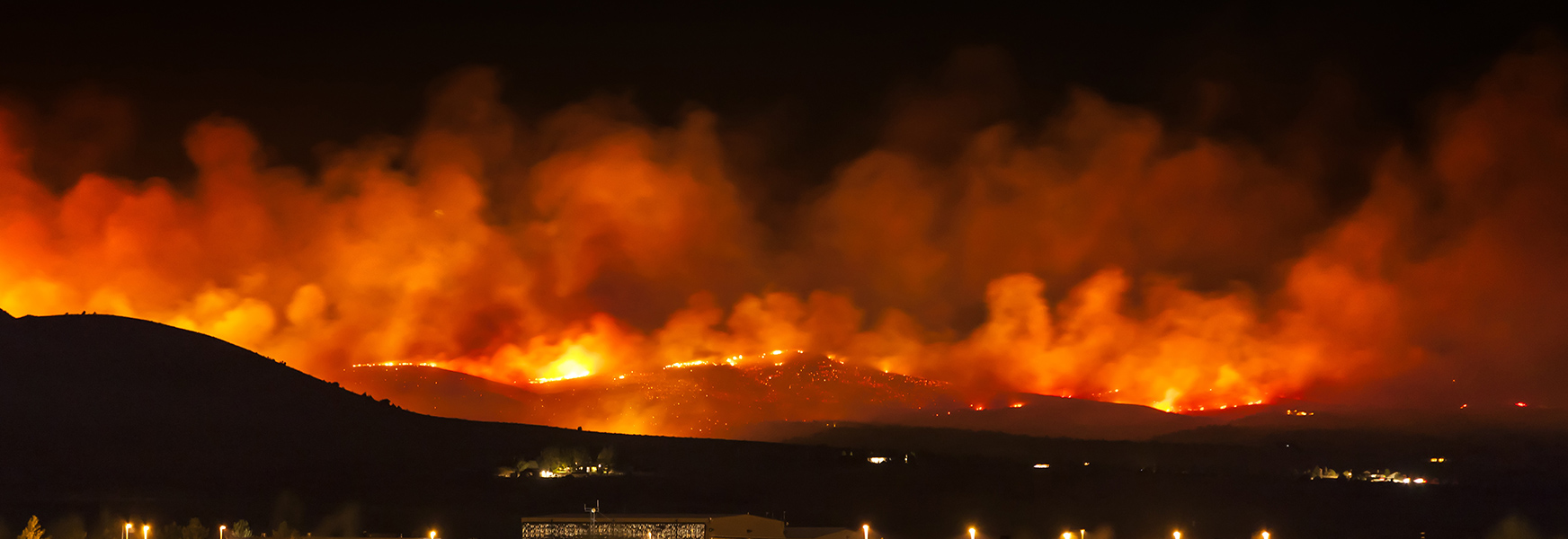Nor’easters, Hurricanes, Fires, Blizzards—Oh My! Hope for the Best, Plan for the Worst

It seems that every day brings more bad news about storms and other disasters occurring around the country. Employers have to be prepared for every contingency to assure worker safety and business continuity. If you don’t feel 100% prepared for the next storm, fire, or power failure, then please read on. You can also review our previous posts on disaster preparedness and recovery listed at the end of this post.
Start with developing a disaster recovery plan. A disaster is a sudden, unforeseen catastrophic event that will cause damage or loss of property or people, interrupting normal operations. One of the first things you should do when getting prepared for an event of this magnitude is to assess your risk. Determine the vulnerability of your operation and the impact it could suffer. Then determine how to maximize your limited time and resources in order to return to regular activity. This would probably involve a cost-benefit analysis. Priorities should be given (in this order) to people, business, and the environment.
It’s important to identify your key personnel. Managers with the authority to make decisions, people who know the building and the exposures in it, logistic experts, communications staff, and your legal team to name a few. Invite the fire and police department to conduct a walkthrough prior to any disaster. They could provide you with valuable information on building and security risks.
Once your written disaster plan is complete, make sure all affected employees are properly trained on their roles and don’t forget to have regular drills in order to ensure the effectiveness of the plan.
Now take some proactive steps to mitigate any future injuries, damage, or business interruption. Consider the following tips:
Before the storms come to your area, inspect any trees on the property. There is a lot less potential for damage if trees are pruned or removed by an arborist rather than Mother Nature. Look for:
- Infection/ infestation signs—large numbers of woodpecker holes indicate the birds are eating pests. If the bark has large cracks or is crumbling then the tree isn’t healthy.
- Any large dead branches around the top of the tree—they are called widow makers for a reason. If more than 50% of the tree is deceased then it is probably time to take it down.
- Root issues—if there are fungi growing around the root or heaving soil around the roots, then it is a sign of root defects.
All of these can be assessed by an arborist to best determine your need for removal. Check the website treesaregood.org from the International Society of Arboriculture to find a certified arborist in your area.
If your business doesn’t have an automatic backup generator, then you might find yourself using a portable generator for emergency power. Knowing how to use them properly before an emergency will decrease the chances of making a life-threatening mistake. If levels of carbon monoxide are high enough it only takes five (5) minutes to kill someone. To stay safe remember these tips:
- Never contain your generator in an enclosed space.
- Keep portable generators a safe distance from buildings. Check the user manual for the minimum distance to maintain from a dwelling or workspace.
- Make sure the exhaust is pointed away from the building.
- Cover your generator from any rain or snow with an approved device that ventilates the fumes.
- Shut down a generator and let it cool before refueling!
- Store gasoline in an ANSI approved container, away from heat sources and combustibles.
- Don’t attempt to back-feed a portable generator into any building by plugging it into a wall outlet. It can create hazards to line workers as well as yourself. Plan ahead and get a properly installed generator cutoff switch or install an automatic backup generator.
When it comes to safety around downed power lines remember they can still be active! As the saying goes, “no power line is safe to touch… ever!” If a pole comes down on your vehicle do not get out until it is deemed safe to exit. If you absolutely must exit due to other hazards, then jump away from the vehicle and shuffle your feet until you can get out of harm’s way.
Keeping an emergency kit available is always a good idea. If facilities have to be manned during a power outage or if people cannot travel freely due to a storm or hazardous conditions, then these kits can be life savers. Emergency food, water, batteries, first-aid kits, and flashlights are a few of the common items. Learn how to build a kit for yourself or business at Ready.gov.
Disaster can strike anywhere, be it man made or natural. Sometimes all we can do is prepare for the worst. For more info on this subject check out our previous posts:
Be Sure the Calm After the Storm is as Safe as Possible
How Will You Respond in an Emergency?
By Alexis Flink and Tony Soares